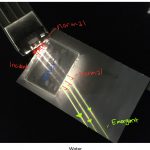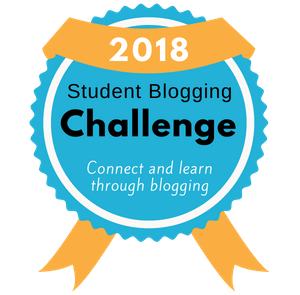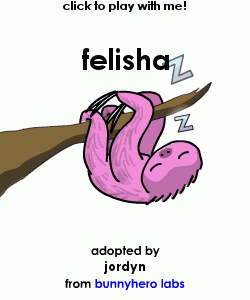Ooooooooommmmmm, oooooooommmmmmmm. Oh hello there, I was just meditating a bit before we get into the latest, the greatest, science post about…. wait for it….. LIGHT!!
Oh yes, light! Light is so amazing and I can’t wait to tell you guys about IT, eeeeeeee! We will talk about thinks like what light is and what it is made of, light as a particle and a wave, the role of Islamic scholars in light, and the roles of light on earth, why are WE, as humans so drawn to it. Oh my gosh, I just can’t wait to get started soooooo…… yeah!
LIGHT, JUST LIGHT
Ok, let’s start with the basics, the foundation, what. Is. Light? Light is energy, it is made up of particles, and also waves. But how is that so you ask? Because it’s not just particles, and it’s not just waves, it has characteristics of both. This argument has being going on for a looooong time. So some people thought that light was a bunch of tiny particles and it kinds is, it has some characteristics of particles, the one problem is, if particles have mass, why doesn’t light? There it is, there is a missing characteristic that does not determine that light is a particle.
But it also doesn’t have all the characteristics of a wave. It’s follows the fact that a wave is kind of like a track for light to follow from point A to point B with out bringing any material with it, but not many other characteristics. Yes, yes I know, you’re wondering how light can’t be either, and it isn’t, it’s actually both. We did a small lab on it, to prove that light is some kind of wave. Taylor and I took two plane (flat) mirrors and angled them like this:
Both kind of facing up, but tilted. We shined the light on the bottom mirror which reflected of the top mirror and on to the roof of the classroom. We realized we didn’t really need two mirrors to prove it’s a wave because like a wave in the ocean, the light reflects and bounces off the mirror just like a wave crashes into the shore and then go back out to the ocean.
ISLAM AND LIGHT
We aren’t the only ones who have added to light, if you look way back, even before Isaac Newton’s time, who is the said- to- be father of light, to the golden age of Math and Science you will see that the most revolutionary discoveries of light were made by Islamic scholars. There was another father of light and his name was Ibn-al Haytham, he has a famous experiment called the camera obscurer.
The camera obscurer was one of many revolutionary scientific discoveries in his time. When we look back at the golden age of optics, we see that many of the experiments that were done then are still being done today or have influenced a bigger idea. Here is an awesome video you can check out if you want to learn more.
LIGHT ON EARTH
If you think about it, we use light for almost everything. We need light to see well, we use those cute little fairy lights to decorate our rooms, and we use it for science purposes as well. But we are kind of greedy with light, we think we are the only ones who use it, who need it to live. But really, light is used everywhere in the world, from the deepest depths of the ocean to the highest points on land and the sky. An example of a land creature that uses light to actually survive and thrive is the firefly.
The fireflies are the sweet little bugs that blink there little butt lights and are caught in little jars. They kind of look like stars that move around through the night sky. So we see them as pretty little buggies, but they actually need to blink their lights to live, not just for our satisfaction. They blink their lights sometimes for mating purposes, warning, or even to lure in prey and their light is caused by a chemical reaction of air and a chemical inside the fireflies abdomen. This green light is called bioluminescence.
Another species of animal that glows or lights up is one that lives in the ocean. It is something you know of and have heard of before, a jelly fish. A few species of jellyfish that light up include cauliflower jellies, crystal jellyfish, or white-spotted jellyfish. The type of light that they give off is also bioluminescence. Now you are probably wondering why a little jellyfish would have to give off light in the ocean, and no, it’s not so they can see because they don’t have eyes. Jellies use light for defence against predators. It is also thought they use it for communication or even mating but that isn’t for sure.
So as you can see, we really aren’t the only ones who use light, technically, we could survive without lightbulbs and lamps and pretty chandeliers, but creatures like the jellyfish and the firefly need light to survive.
BIG FAT LIGHT LABS
Ok, I think it’s time to discuss our big fat light labs or BFLLs. The first one we worked on was our mirrors one. We did a worksheet in which we had a ray box, baffle, a plane mirror, a concave mirror, a convex mirror, a white piece of paper, a black piece of paper, and a piece of aluminum foil. With these items we, we had to reflect the light of of them on to a plain piece of paper and then with a pencil trace the incident rays (the original rays that come out of the light source) as well as the reflected rays (the rays that come off of the mirror). We usually had to do one with 90° incident rays and one with 45° incident rays. We repeated these steps with all the different materials and then answered a few questions afterwards. I did this lab with Kiera, go check out her blog!
The second and last BFLL that we did was the BFLL, not the BFLL. Now I’m just confusing you, not a big fat light lab, but a big fat lenses lab. So this lab focused on lenses instead of mirrors. We still used a ray box and a baffle but the actual materials we used were different. These materials were either translucent or transparent instead of opaque as in you can not see through them.this is because unlike the last lab which was about reflection, this one is about refraction. Refraction means that when an incident ray enters it changes it’s direction. Imagine if you are biking and then you go into mud, you slow down and kind of swerve a bit, but when you come back out you are perfectly straight again, that’s kind of like refraction.
Anyway, back to the lab, with the ray box and baffle, we shined it through things such as a bi-convex and bi-concave lens, vegetable oil, ethanol, and water. We noticed all the differences and practiced making our lens diagrams as well as answer questions with in this lab. I did this lab with Taylor.
- Bi-convex lens
- Oil
- Ethanol
- Water
- Bi-concave lans
I would just like to say that these labs helped me understand the meaning of light more than I did before. I think this is because it is hands on and it really shows you how light works.
THE BIG QUESTION!!
The big question is, why are we so drawn towards light, what makes it so interesting? Well personally because I think it’s beautiful. Obviously not artificial light, that’s not beautiful but the way it works and light in the wild is mesmerizing, unbelievable. There is endless learning you could do about light, so many different components. But, I think most people are drawn towards light because we need it. We need things like lamps and flashlights to see, we need lights on our ceilings to light up rooms, and we even need powerful lights for things like science. But light is more than that. People celebrate light for it’s beauty. Things like fireworks and fountains are used for decor and to look nice. But the most beautiful light around is natural light. Lights in the ocean, lights in the sky. As you can see light is an important part of everyday life for us, but most of the time, light is more important in nature. Light is everywhere.
BONUS LIGHT QUESTION: Why is light correspondent with good and dark with evil? Now this is a hard question, a thinker. But to explain it in a relatively short mannerism, light is…… well, light. It’s usually white and always beautiful. Darkness is empty and lonely, so not necessarily evil but dark is black, and black is the colour of evil. That’s the short version of my PERSONAL answer, straight from my brain.
~Jo


















Leave a Reply